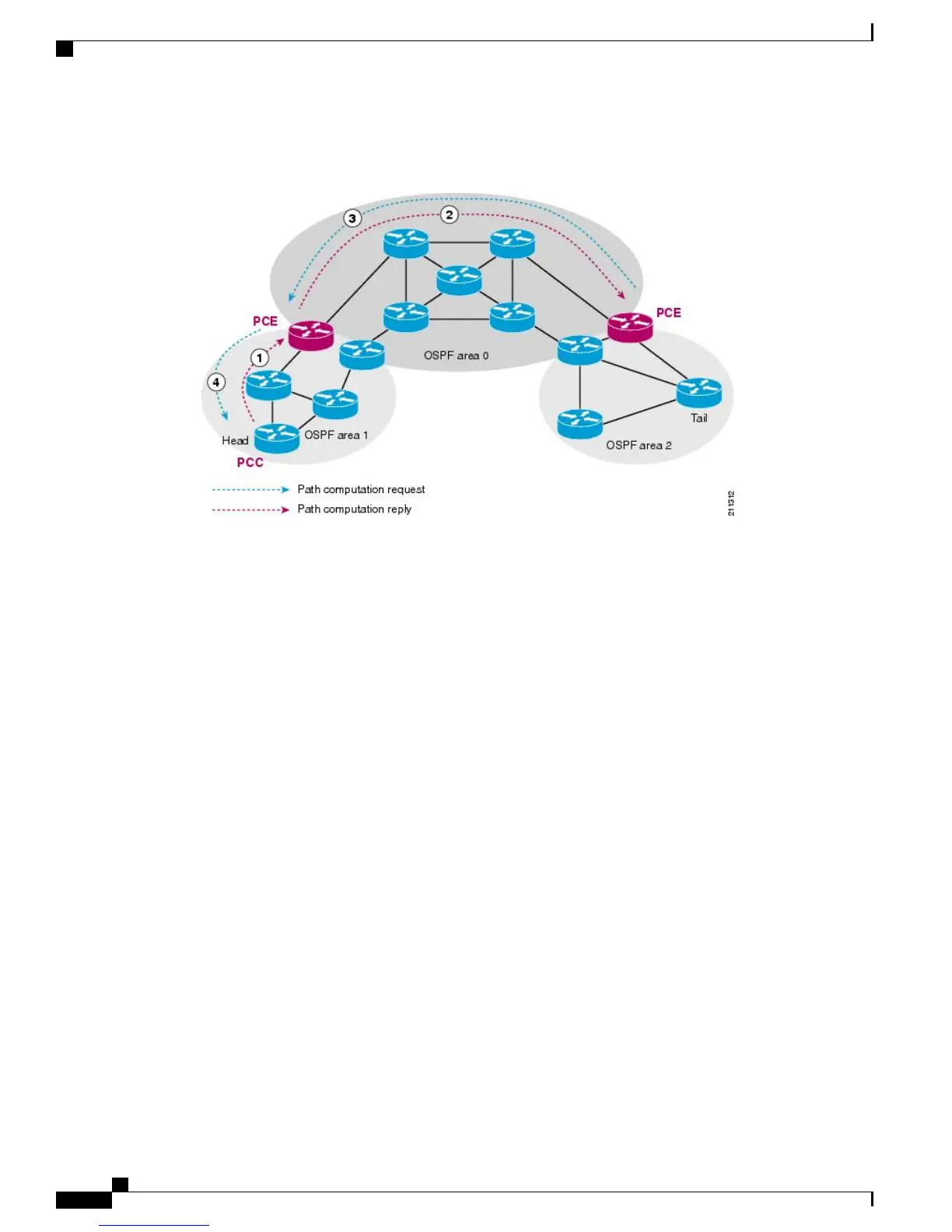This figure shows a typical PCE implementation.
Figure 15: Path Computation Element Network Diagram
Path computation elements provides support for the following message types and objects:
•
Message types: Open, PCReq, PCRep, PCErr, Close
•
Objects: OPEN, CLOSE, RP, END-POINT, LSPA, BANDWIDTH, METRIC, and NO-PATH
Related Topics
Configuring a Path Computation Client, on page 281
Configuring a Path Computation Element Address, on page 282
Configuring PCE Parameters, on page 283
Configure PCE: Example, on page 351
Policy-Based Tunnel Selection
These topics provide information about policy-based tunnel selection (PBTS):
Policy-Based Tunnel Selection
Policy-Based Tunnel Selection (PBTS) provides a mechanism that lets you direct traffic into specific TE
tunnels based on different criteria. PBTS will benefit Internet service providers (ISPs) who carry voice and
data traffic through their MPLS and MPLS/VPN networks, who want to route this traffic to provide optimized
voice service.
PBTS works by selecting tunnels based on the classification criteria of the incoming packets, which are based
on the IP precedence, experimental (EXP), or type of service (ToS) field in the packet. When there are no
paths with a default class configured, this traffic is forwarded using the paths with the lowest class value.
PBTS supports up to seven (exp 1 - 7) EXP values associated with a single TE tunnel.
Cisco IOS XR MPLS Configuration Guide for the Cisco CRS Router, Release 5.1.x
186
Implementing MPLS Traffic Engineering
Policy-Based Tunnel Selection

